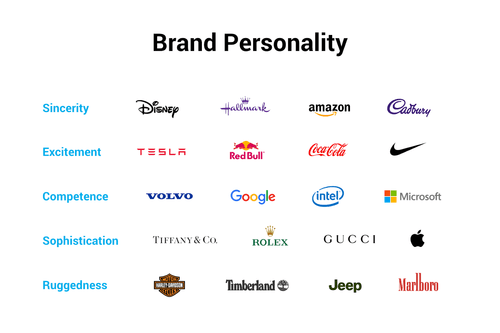5 Tips for Creating a Brand Image That Builds Customer Loyalty

With so many companies selling the same products or providing the same services, brand image is what ultimately differentiates the brands we all know and love from the rest.
Huge companies like Nike and Amazon rely on their loyal customer base and unique branding to help separate them from the pack. But, how can smaller companies use their digital marketing strategy to establish a strong brand image and build customer loyalty?
Before getting into the details, we need to start with the basics.
What is brand loyalty?
- Brand loyalty is the tendency of customers to continuously choose your brand over others.
- Brand affinity, on the other hand, is when consumers feel that a brand shares their same values. Brand affinity deals with the emotional side of decision making and helps create trusting relationships between a company and their customers.
- Brand image is the impression consumers have about your company based on your digital presence, company values, and brand personality.
All of these aspects influence the way people feel about your company and can ultimately determine whether they choose your brand over others. It can be difficult to establish a good reputation and build a loyal customer base, especially when you are competing against industry giants.
To help, we’ve outlined 5 key tips for achieving loyalty through a curated brand image.
5 tips for creating a strong brand image that speaks to your customers.
1. Brand Personality
Just like every human has unique personality traits, so should companies. Brand personality allows customers to relate with brands and helps those relationships develop on a more personal level.
There are five main personality traits associated with brands: sincerity, sophistication, competence, excitement, and ruggedness. Each of these personality traits helps describe a brand’s voice and marketing approach.
Distinguishing your brand’s personality is essential in creating meaningful marketing campaigns that resonate with consumers. It’s important that your brand’s personality shines through in all of your marketing campaigns and remains consistent.
2. Company Values
One aspect that plays into the personality of a company is their values. A study done by Harvard Business Review found that 64% of consumers make purchasing decisions based on whether the company has their same values.
It’s important to not only claim that your company holds certain values, but take action and incorporate those values into the everyday fabric of your business.
For example, Ben and Jerry’s core values are not only to make quality ice cream, but also to find innovative ways to help their communities and make the world a better place. The Ben and Jerry’s Foundation, founded in 1985, collects 7.5% of the company’s profit every year and funds community-oriented projects and other causes they support like GMO labeling, fighting climate change, and social justice work.
They serve as a strong example of successfully integrating their values into the fabric of their company. No matter what your company’s core values are, make sure you present them in an honest and authentic way.
3. Brand Authenticity
Consumers are becoming increasingly less trusting and demand more from companies than ever before. In order to attract loyal customers, you have to prove that your company walks-the-talk.
Make sure your brand’s personality and values are true to your company and reflect your goals. Consumers will spot disingenuous companies which can damage your brand’s reputation. Ensure the content you produce and campaigns you run match your true personality and values.
This will help establish a level of trust among your customers and help them feel more confident in choosing your brand.
4. Target Audience
One of the most important parts of establishing your brand image is understanding your audience. Different marketing strategies resonate better with different audiences, so ensuring that your audience is receiving your message in the way it was intended is essential in creating strong customer relationships.
For example, a company like Gucci, whose target market is high-income, middle-aged audiences, strives for a much different image than a company like Nike whose messaging is more casual and targeted to young adults.
Creating marketing campaigns that speak to your target audience will help people feel more connected to your brand.
5. Social Media Presence
Social media has become one of the most powerful brand communication mediums. Data from July 2020 shows that 3.96 billion people use social media–almost 51% of the global population.
With these kinds of numbers, there is a huge opportunity for brands to build awareness, connect with consumers, and create a voice for themselves on social media.
Netflix is a great example of this–even with increased competition, the streaming giant has relied on its strong brand personality and social media presence to maintain their position as top dog in the streaming services industry.
So, what does all of this mean for your digital marketing strategy? For one, branding and marketing should be an integrative process.
While creating your brand image may take some time, your digital marketing strategy should always be current, adaptive to changes in the needs of your target audiences and reflective of your company’s personality and values.
Most importantly, genuine and authentic messaging will allow your company to gain the trust of consumers and create meaningful, lasting relationships.
For more about leveraging social media channels, check out our blog on Harnessing the Viral Power of Tik Tok.
Want to help your business grow its social media advertising presence? We’re the experts. Contact us and request an audit today.

Jen Cuneo is an incoming senior at the University of Oregon who enjoys hiking. Her favorite season is fall because she loves to watch the leaves change their color. She’s never been skydiving but would like you to know it’s on her bucket list.


